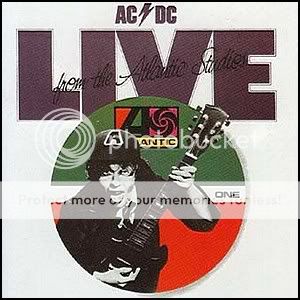Erik Jayce Landberg is a Swedish guitarist and composer, specialising in chorus driven hard rock. His 2008 album ‘Break The Spell’ was praised in melodic rock circles due to its solid musicianship. It’s also impressive that ex-Yngwie Malmsteen and Vindictiv vocalist Göran Edman was also on board for that release, given that Landberg was relatively unknown at that time.Landberg’s second offering ‘Good Sleepless Night’ is a more than worthy follow up, featuring its share of enjoyable tracks. The album opens with a heavier number, ‘My Valentine’, which comes with a chuggy riff and slightly treated vocals. During the mid-section, Jayce launches into a superb guitar solo, which features some decent metal shredding; what’s most amusing here is that the band speed up just to accommodate the solo (a technique used to great effect on the self-titled album by Swedish cult band Pole Position). Luckily, Landberg shows some restraint and this is one of the only times he takes this approach. ‘The Devil’s Wine’ and ‘Skyscraper’ are more mid-paced, providing classy examples of melodic hard rock. On the latter, Göran Edman is in great shape vocally. There’s something unmistakably Swedish about the style of hard rock here and I’m pretty sure it’s not just Edman’s accent.
‘Invasion’, another track with a mid-paced fists-in-the-air approach, features vocals by another ex-Malmsteen man – Mark Boals. For those of you familiar with the styles of Edman and Boals, you’ll know they take a similar vocal approach. Personally, I’ve always favoured Edman, given the choice. This album is no exception, since although ‘Invasion’ features some decent musical moments, Boals’s vocal is a little too squealy for my tastes. Once again though, Landberg is on form and the guitar solo here is a belter, despite wandering into neo-classical territory on occasion.
‘Sun Dance’ is a driving instrumental, highly reminiscent of Joe Satriani, maybe with a little Gary Hoey thrown in; overall, it has a very natural flow. Interestingly, for someone who’s been compared to Yngwie Malmsteen, the main focus here is on groove and melody, rather than shredding and virtuosity for the sake of it. For ‘The Thorns’ Jayce trades in his guitar and plays the Steinway piano. During this somewhat melodramatic ballad, Göran Edman is in fine voice and, once again, harmony vocals are used to great effect. ‘Abduction’ is a piece of guitar virtuosity that feels like Lanberg’s answer to Eddie Van Halen’s ‘Eruption’. Naturally, it’s not as good as that Van Halen landmark and I’d say it felt like filler, but it redeems itself at the last moment by featuring a flashy bass solo, played by Europe’s John Leven.
With so much solid material on offer, it seems unfortunate to mention the album’s bad moments, but I feel it’s only fair I should do so for a balanced review… ‘Bitch Is Back’ provides stompy hard rock enjoyment on the surface and makes excellent use of harmony and multi-tracked vocals, but is let down by poor songwriting and an unnecessary phased vocal effect on the verses, but thankfully, its punchiness means it’s short. Also letting the side down lyrically is ‘All I Wanna Do’, which wanders past the point of tacky and becomes slightly embarrassing. It’s nowhere near as bad as Chad Kroeger’s smutty meanderings on Nickelback’s ‘Dark Horse’, but it’s still one of those moments where you’ll find yourself wishing that musicians would leave keep their sexual ardour to themselves.
Although it features those couple of dodgy tracks, ‘Good Sleepless Night’ is a strong album. It’s been said that it comes recommended for Yngwie Malmsteen fans – probably due to its connections with both Göran Edman and Mark Boals. While on that basis Malmsteen’s followers are likely to give this a listen, I feel this is an album an appeal beyond that, as it offers far fewer neo-classical influences than most of Malmsteen’s work and, as consequence, feels less self-indulgent. Most melodic rock fans should find something to enjoy here as, like Landberg’s debut, ‘Good Sleepless Night’ offers accessible songs and musical prowess.
March 2010





